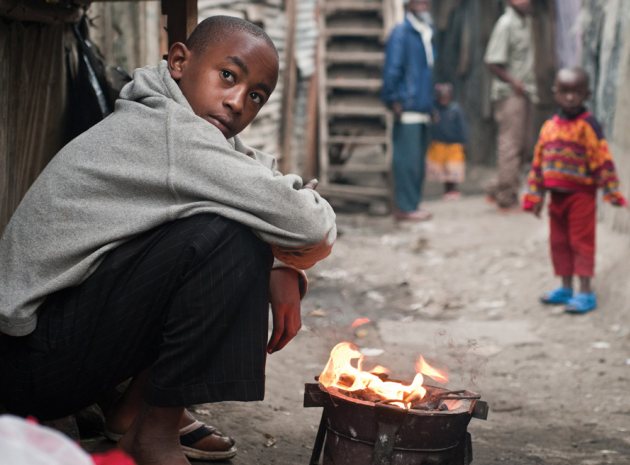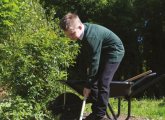Get your students considering the difference between ‘need’ and ‘want’ as they explore life in urban slums – home to over a billion people across the world – suggests Kerry Deacon at Comic Relief.
Today you will…
- Think about what children need to live a healthy, happy and safe life
- Understand the difference between needs and wants explore the rights of a child and whether these are being met in urban slums
- Develop your skills in debating and persuasive writing
- Express your own opinion
One in seven of the world’s population survive in urban slums. They live, work and raise their children in appalling conditions. Slum-dwellers suffer from overcrowding, inadequate and insecure housing and lack basic services such as clean water and sanitation. They live under the constant threat of violence and forced evictions. In this lesson, your students will explore children’s rights, how they are based on essential needs, and whether these rights are being met in urban slums.
Starter activity
To get your students thinking about what young people need for a healthy, happy and safe life, give them a series of cards with different images on them: gadgets, clothes, mobiles, games consoles, money, houses, food and water. In groups, or pairs, ask them to sort the cards into two piles: one for the things they need and one for the things they want.
When they have finished sorting their cards, give them an opportunity to talk about their decisions as a group and reflect on them. Would they move anything from the ‘want’ to the ‘need’ pile
or vice-versa? Let them make any final
adjustments to the piles before feeding back their ‘needs’ and ‘wants’. Then ask what they understand to be the difference between a ‘need and a ‘want’. Introduce your students to Articles 27, 28 and 24 of the UN Convention on the Rights of a Child (1989).
Unicef has produced a child-friendly version, which is summarised below:
Article 27
You have the right to food, clothing, a safe place to live and to have your basic needs met. You should not be disadvantaged so that you can’t do many of the things other kids can do.
Article 28
You have the right to an education. You should be encouraged to go to school to the highest level you can.
Article 24
You have the right to the best health care possible, safe water to drink, nutritious food, a clean and safe environment, and information to help you stay well.
Explain that the convention on children’s rights is based on need – what children all over the world need to live a full life and grow into healthy, happy and responsible citizens. Almost every country has agreed to these rights.
Before watching the film as part of the main activity overleaf, ask your students to take a close look at images of urban slums across the world. What can they see? Are there some things that are common to all urban slums?
Main activities
1 Active screening
Tell your students that they are going to watch a film about Dennis, a 13-year-old boy who lives in an urban slum called Mukuru in Nairobi, Kenya. To download and screen the film go to rednoseday.com/ secondaryresources.
Ask them to take careful notes as they watch the film about: 1) the issues and problems Dennis faces in his day-to-day life; 2) whether his basic needs and rights as a child are being met. Invite them to share their notes at the end.
2 Debate
Present your students with the motion: ‘Young people in urban slums have everything they need to live a healthy, happy and safe life.’
Explain that they are going to hold a debate, arguing ‘for’ or ‘against’ the motion.
Choose one student to act as chairperson to create a structured, balanced and respectful debating environment. The chairperson must indicate who can talk when the whole group are debating. Split the rest of your class into two groups; one ‘for’ the motion and the other ‘against’.
The group of students in favour of the motion must write five points that agree with the statement. This will form the basis of their argument
The group of students against the motion must write five points that disagree with the statement. This will form the basis of their argument. Before holding your debate, remind students that they must listen to what each person has to say respectfully, then respond to them and argue against their point.
3 Present
Following the debate, ask each student to prepare a five-slide presentation outlining the arguments for and against. They can use their notes taken during the film screening as well as their group notes from preparing and delivering the debate. Students should research information and images to validate and illustrate their arguments.
Home learning
- Create a children’s rights poster from the three articles of the UN Convention on the Rights of a Child.
- Start campaigning for children’s rights by writing a couple of entries for a blog.
- Think of ways to raise awareness of children’s rights through Red Nose Day fundraising activities.
Summary
To round off the lesson, students can work independently to produce a short piece of persuasive writing encouraging young people in the UK to campaign for children’s rights. They should use what they have learnt from the film and debate exercises to form the basis of their persuasive approach. Remind your students to use paragraphs to structure their writing and that checking spelling and punctuation are important in producing a final draft.
Stretch them further
to encourage empathy, devise a paired, hot-seating exercise where students are encouraged to ‘walk in the shoes’ of Dennis and be questioned about his life. Ask more able students to come up with ideas for how the rights of young people like dennis can be met. what about children and young people in the uk? do they have their needs met?Additional resources supporting materials are available at rednoseday.com/schools
About the expert
Kerry Deacon is an experienced facilitator and teacher. At Comic Relief she writes and produces creative learning materials that deepen students’ engagement with their Red Nose Day fundraising by focusing on the challenges faced by disadvantaged people all over the world.










Get your students considering the difference between ‘need’ and ‘want’ as they explore life in urban slums – home to over a billion people across the world – suggests Kerry Deacon at Comic Relief.